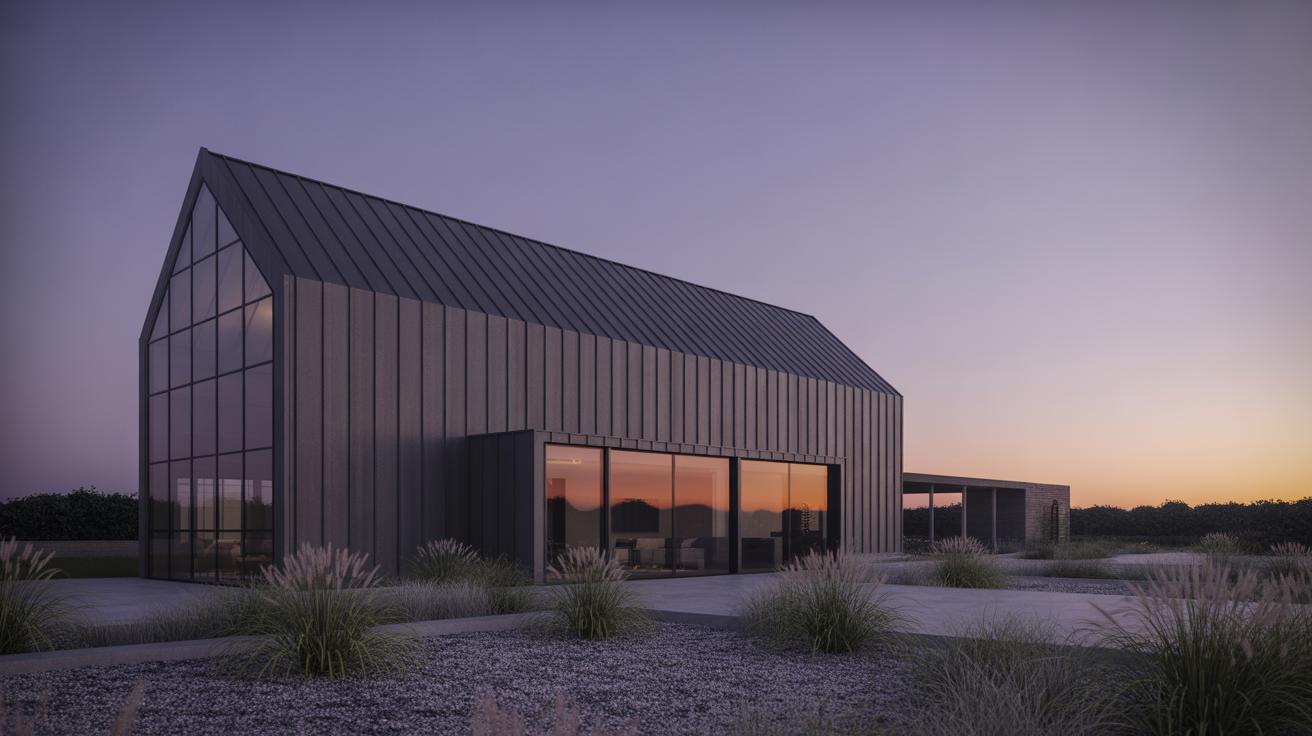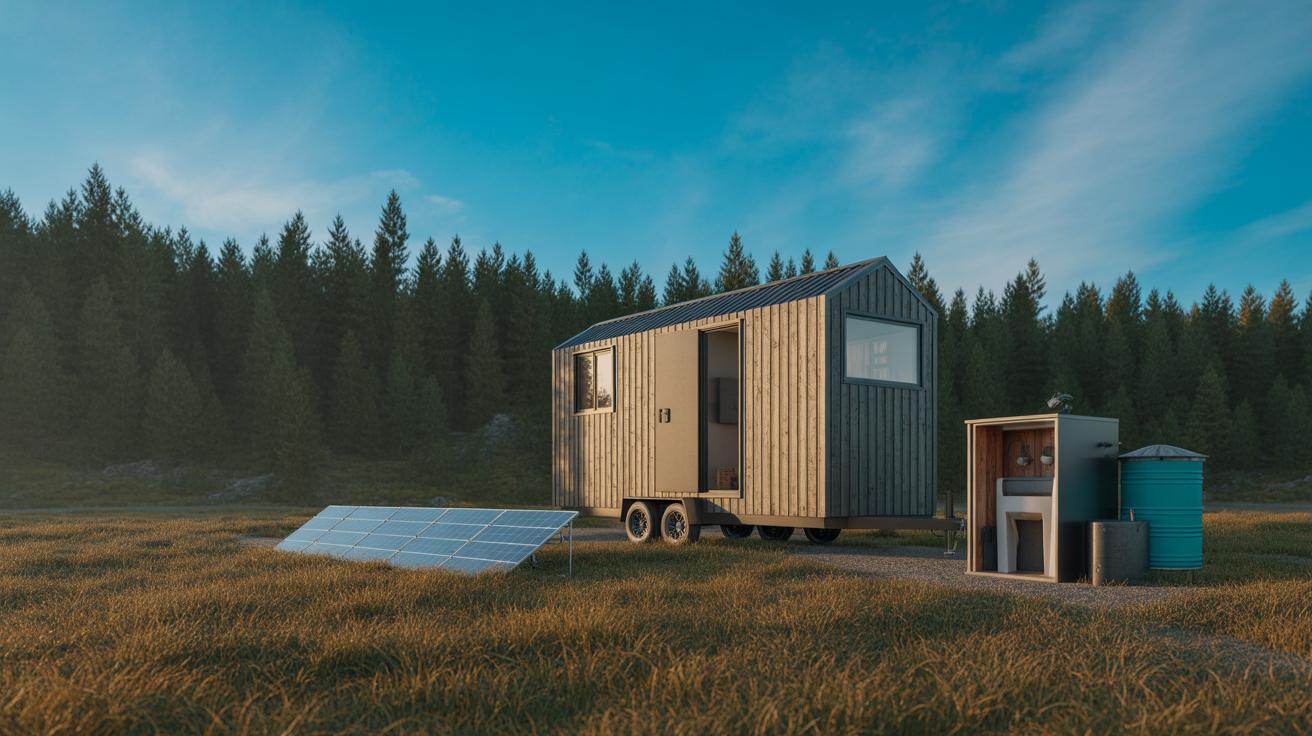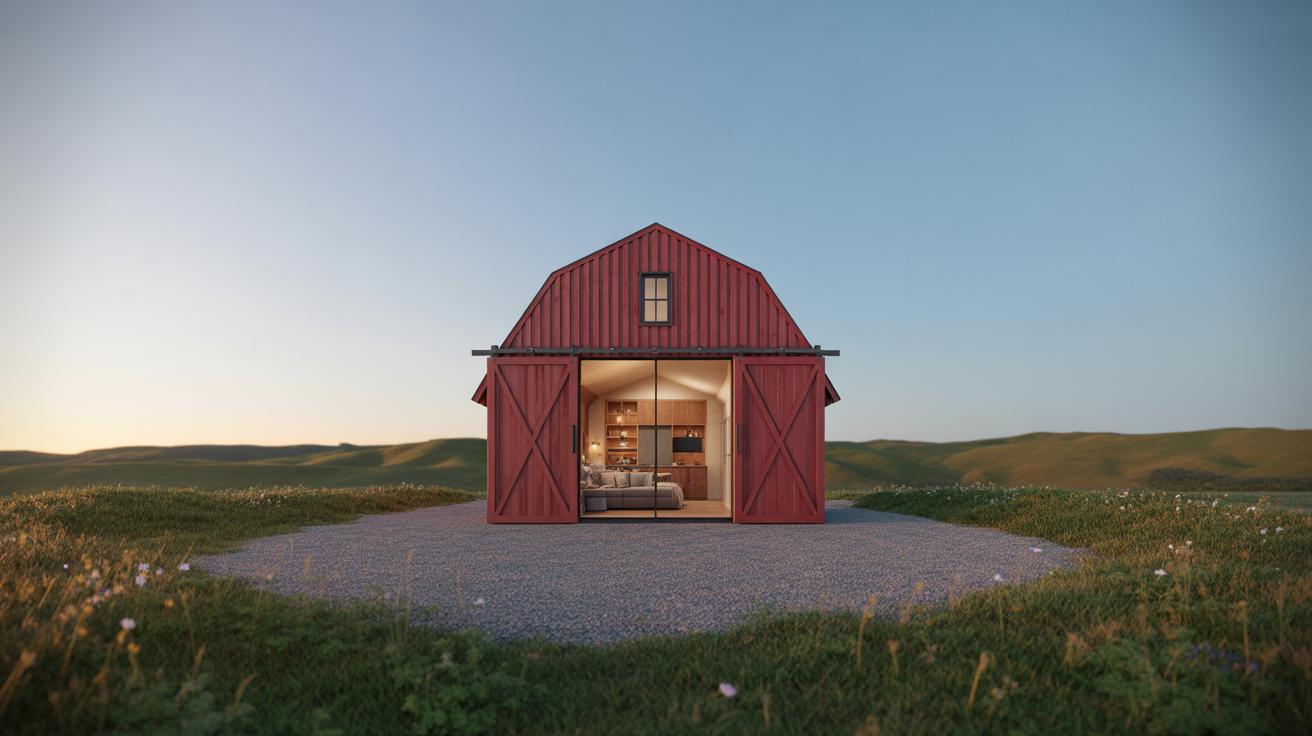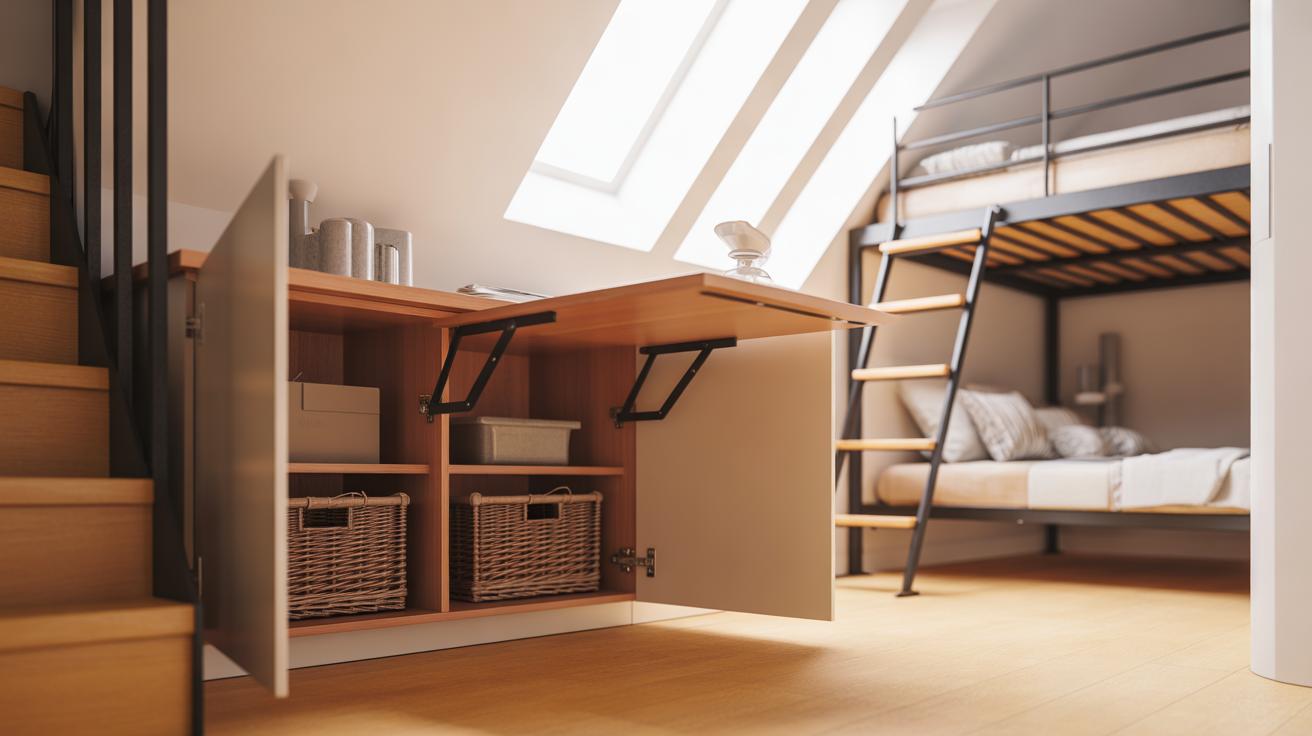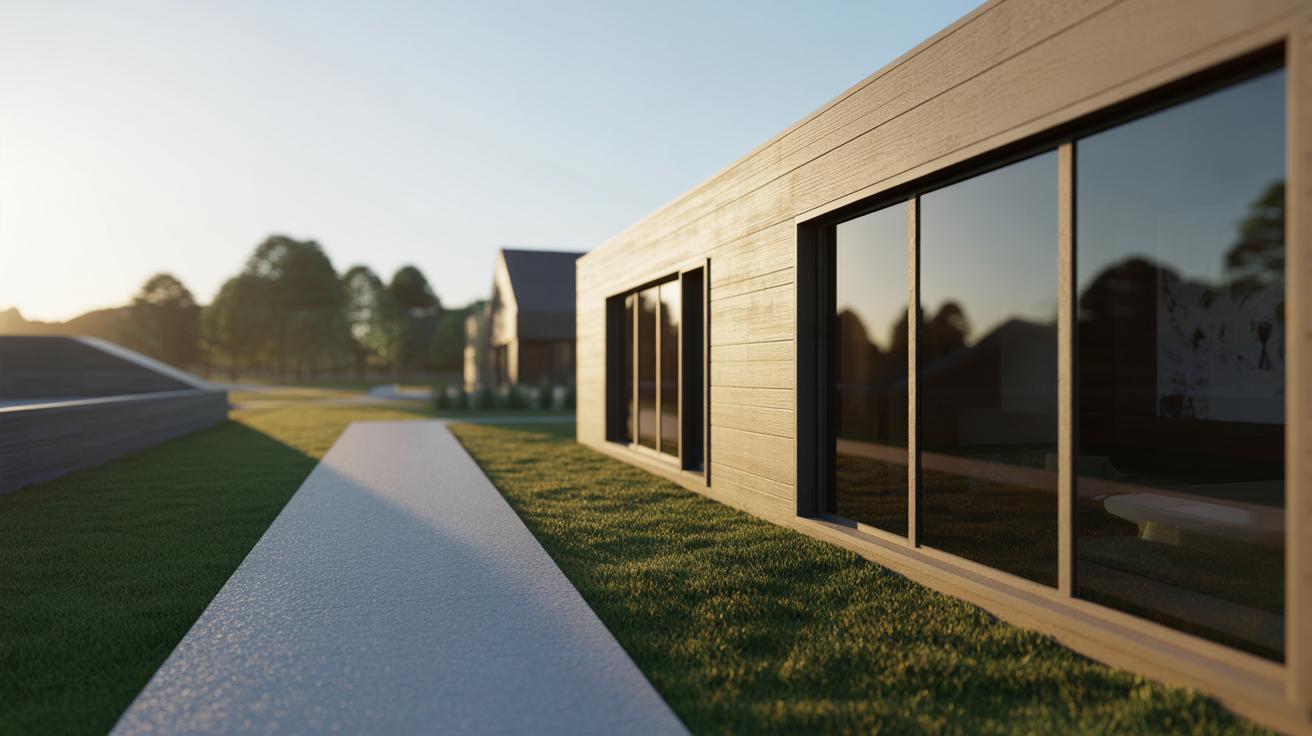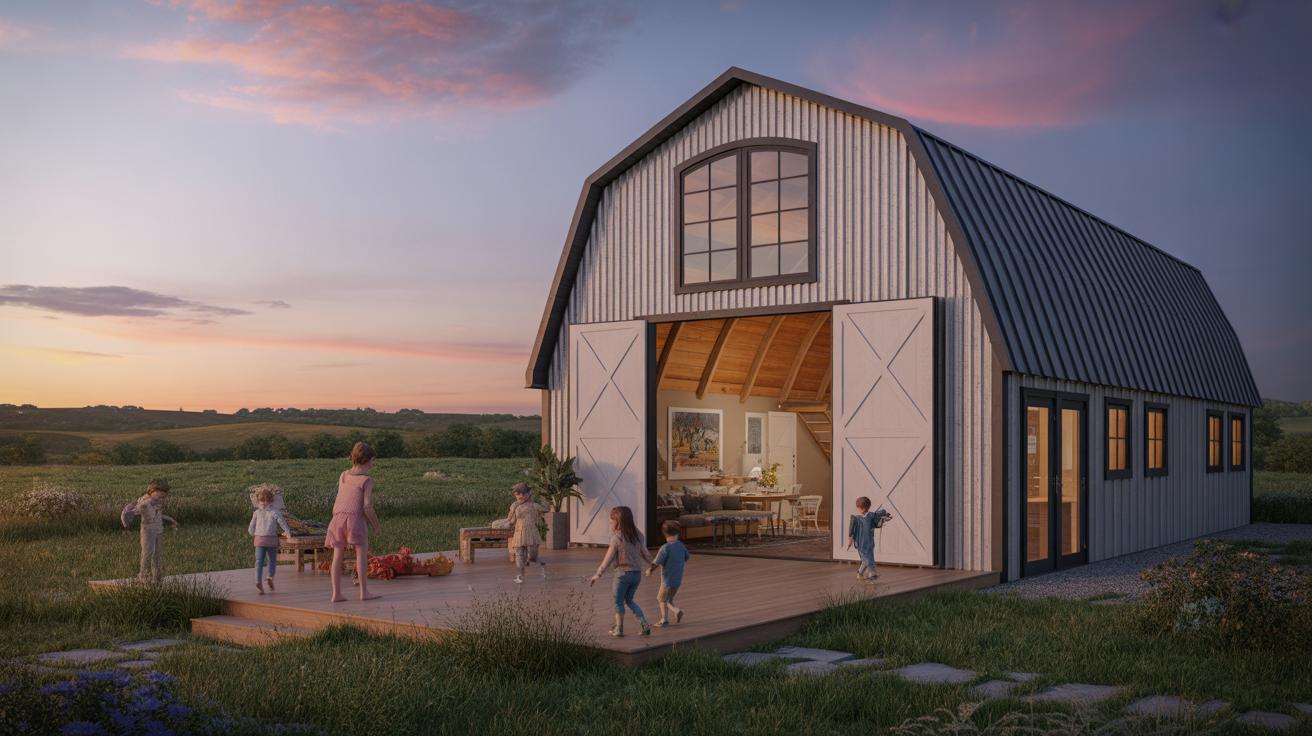Introduction
The modern barn style blends classic barn design with current architectural trends. This style brings simplicity and function to residential homes. It combines rustic charm and modern elements in a fresh way that appeals to many homeowners today. You will see open spaces, large windows, and materials like wood and metal in these homes. These features make spaces inviting and light-filled. The style fits well in both rural and urban settings and adapts easily to a homeowner’s needs.
Understanding modern barn style can help you decide if this is the right look for your home. The contemporary modern barn style adds sleek lines and minimalist touches to the traditional barn look. It offers a clean, fresh feel without losing the warmth of barn architecture. This article will provide you with key design ideas and practical advice. You can use this to create or enhance your own modern barn-style home.
Understanding the Modern Barn Style

The modern barn style draws on traditional barn structures but reimagines them for today’s living needs. It originated from farm buildings designed for utility, focusing on simple shapes and durable materials.
Modern barn architecture keeps this simplicity but adds clean lines and updated materials to fit modern life. Think of large, open interiors with few walls and high ceilings. These spaces offer flexibility and a strong connection to the outdoors.
Key features that set modern barn homes apart from traditional barns include a deliberate use of wood combined with metal elements and expansive windows. These windows do more than bring in light; they invite the outside in, providing views and fresh air. Roof shapes tend to be steep and clean but are less bulky than old barns.
Are you looking for a home that mixes heritage with modern comfort? The modern barn style blends history and innovation, creating homes that feel both familiar and fresh.
Key Elements of Modern Barn Architecture
You will notice that modern barn homes often feature open floor plans. Removing extra walls creates space where light flows freely and family or guests can gather easily.
Wood plays a major role, often in reclaimed or raw finishes, paired with metal accents such as steel beams or galvanized hardware. These contrasts highlight the building’s structure while providing strength.
Windows are usually tall and narrow or sometimes square and grouped in clusters. This style provides balance and rhythm to the exterior walls. They often stretch from floor to ceiling to maximize natural light and views.
Porches and decks extend indoor living outside, making it easy to enjoy fresh air. Roofs remain simple, usually gable-style, reflecting traditional barn shapes but with sleeker lines.
Think about how you want to use your space. Open concepts let you change setups quickly, helping your home adapt to different needs and occasions.
Adaptation to Different Settings
The modern barn style fits more than just country landscapes. This style works well in urban areas, too, with its clean lines and simple form providing a calm contrast to busy city shapes.
In rural settings, modern barns take advantage of wide open land. Large windows connect interiors with farmland or nature views. The use of natural wood and metal also feels right at home in outdoor environments.
In cities, the style adapts by focusing on compact footprints and smart storage. Metal accents and wood panels can blend with urban materials like brick or concrete. Courtyards or small gardens replace big yards but still offer green spaces.
Where do you see your modern barn home? In a quiet country field or a busy neighborhood? Either way, this style can be tailored to suit the land and your lifestyle.
Exploring Contemporary Modern Barn Style
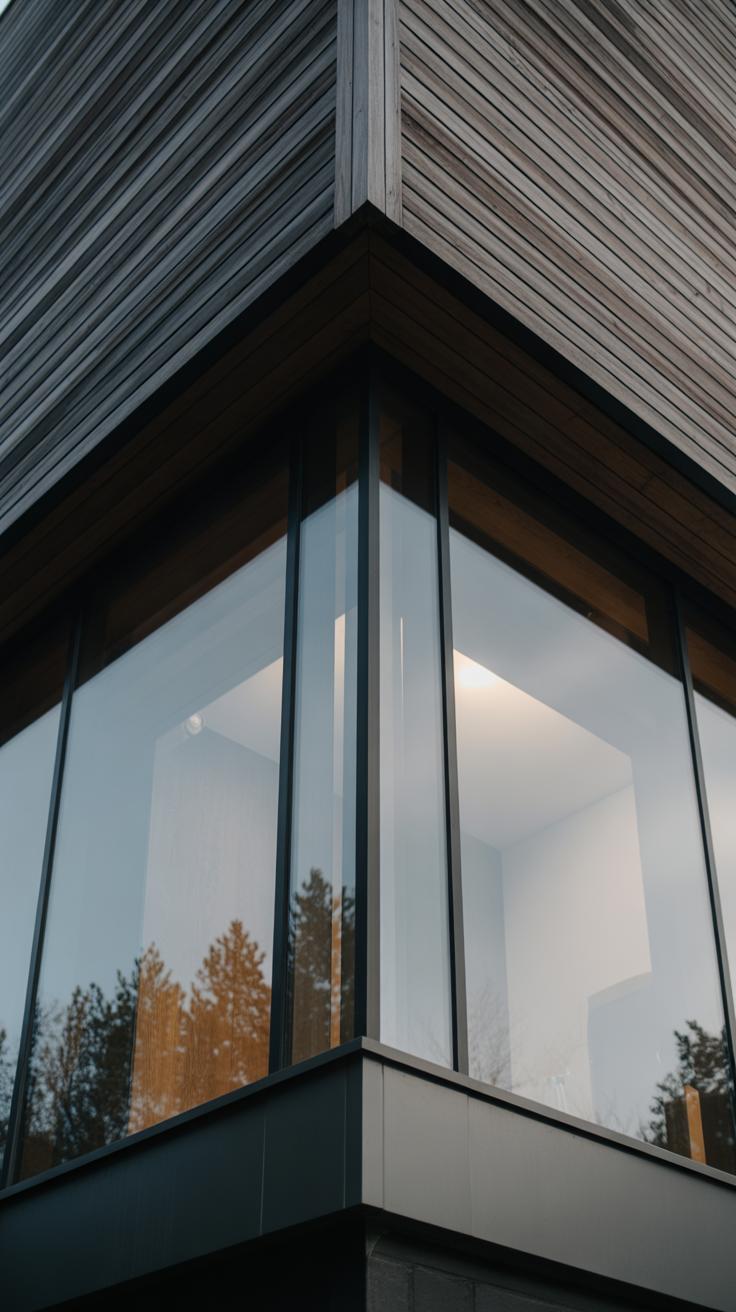
The contemporary modern barn style changes traditional barn designs by focusing on minimalism and sharp, clean lines. Instead of complex details or heavy ornamentation, this style pares down shapes to their essentials, creating a fresh and uncluttered look. Rooflines remain simple but often feature materials like metal or glass to add a sleek touch. Large windows and open spaces bring in natural light, linking the indoors with the outdoors in a way that traditional barns don’t. Do you find yourself drawn to homes that feel open but still grounded? This style achieves that balance by mixing rustic barn forms with modern design principles.
Minimalist Design Influences
Minimalism in contemporary barns shows up through straightforward shapes and a restrained color palette. Whites, grays, blacks, and natural wood tones dominate, giving rooms a calm, ordered feeling. Clean lines frame doors, windows, and furniture without extra trim or decoration. Avoiding clutter and unnecessary items helps keep the space feeling airy. Think about your living room: could a simple layout with plain furniture and neutral colors invite more calmness? Many modern barn owners choose natural materials to combine with minimalism, keeping it both simple and authentic.
Maintaining Warmth in Modern Design
Minimalist design might seem cold, but you can keep a modern barn home warm and inviting. Adding textured wooden beams, reclaimed wood floors, or cozy textiles like wool rugs introduces softness. Warm lighting rather than harsh LEDs creates a friendly atmosphere. Personal items such as art, family photos, or handcrafted objects add personality and comfort. What small touches in your home make you feel most relaxed? Balancing sleek surfaces with natural and tactile elements stops the space from feeling empty or sterile. This approach keeps your barn both modern and welcoming.
Practical Layouts for Modern Barn Homes
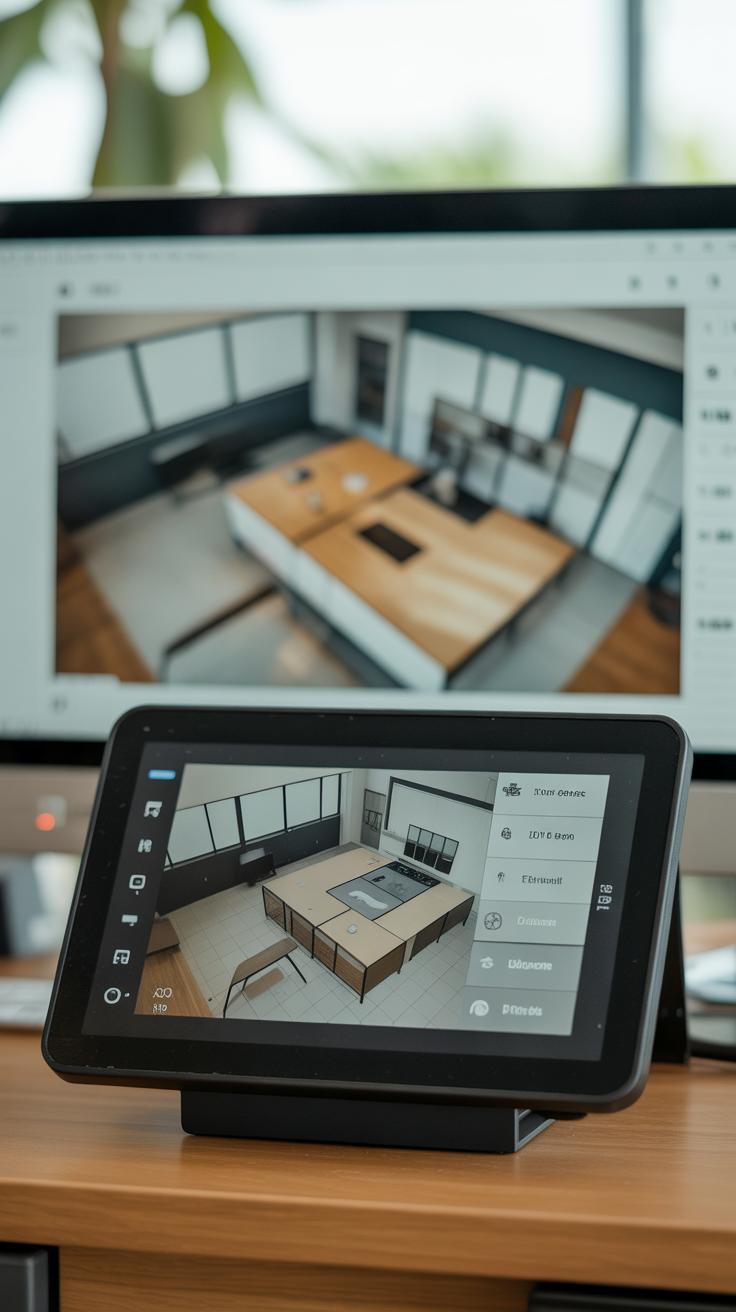
Open floor plans are key to modern barn homes. They create a spacious feel and allow natural light to flow throughout your living space. This openness makes your home more adaptable for different activities, from hosting gatherings to daily family routines. When rooms connect without many walls, moving between kitchen, dining, and living areas feels effortless. The design encourages interaction and keeps everyone visually linked.
However, living in a large open area doesn’t mean giving up privacy or quiet spaces. Defining zones within the open plan can balance freedom with comfort. You can use simple tools like sliding doors, half walls, or furniture placement to mark boundaries. For example, a bookshelf can separate a cozy reading nook from the busy living room. What rooms do you spend the most quiet time in, and how might creating partial barriers help?
Consider angled walls or changes in floor texture to signal a new zone without closing off space. Position bedrooms and bathrooms strategically for privacy while keeping common areas open. Lighting choices, like pendant lights or floor lamps, can also create smaller, inviting environments within your broader layout. How can layering these elements give your barn home both openness and intimacy?
Materials That Bring Barn Style to Life
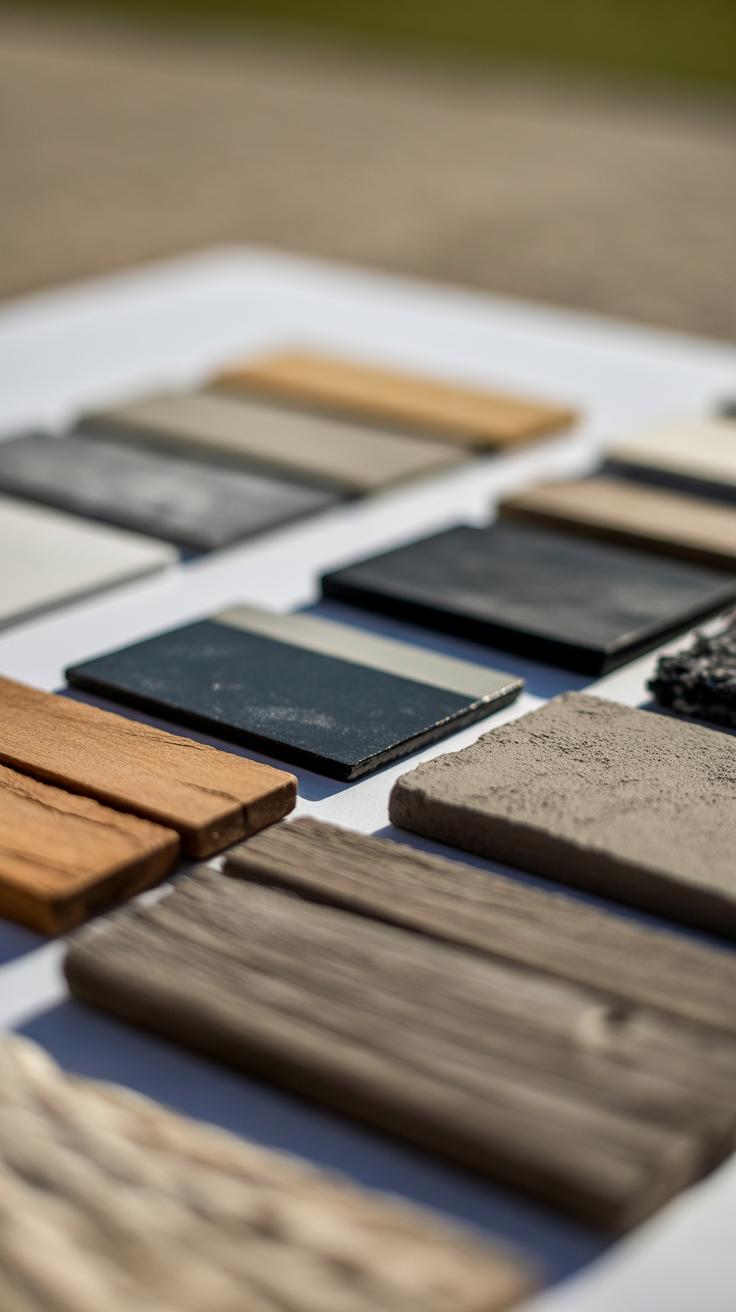
The choice of materials shapes your modern barn home’s look and long-term strength. Wood is a key element that creates warmth and texture in barn design. You can use different types of wood to add unique character to your home’s interior and exterior. Reclaimed wood stands out because it reuses old barn boards or timber. This wood shows natural wear, grain, and knots that tell a story. It brings an authentic rustic feel while supporting eco-friendly building practices. You might choose smooth, freshly milled wood for a cleaner modern look or blend it with reclaimed pieces to balance new and old.
Metal plays a strong supporting role in modern barn styles. Steel beams, iron railings, and metal fixtures add contrast and a sleek edge against the wood’s warmth. Metal accents also improve durability and structural integrity. Using black steel barn doors or copper light fixtures can create striking visual interest and reinforce the barn aesthetic. Other materials like concrete or stone can complement the wood and metal, adding texture to floors or fireplaces. Think about how these materials will age and how easy they are to maintain. What materials best fit your lifestyle and the environment where you live? This balancing act is central to crafting a barn home that stands out and lasts.
Wood Types and Usage
Wood defines much of what you see in a barn home. Reclaimed wood offers a history you can feel in every board. It often comes from old barns, factories, or warehouses and gives your home a worn, lived-in essence. This wood can be used on walls, ceilings, floors, or furniture. It adds texture and richness that new wood can’t match. Pine, cedar, and oak are popular since they combine strength with beauty.
Consider the finish carefully. Unfinished or lightly finished wood shows its natural grain, while stained wood can emphasize certain tones. Wood also affects the home’s insulation and comfort. When you use reclaimed wood, ask about its past treatments and any needed cleaning to ensure safety. What mood do you want your wood to create—warm and cozy or fresh and contemporary? Your choice influences how the space feels and performs.
Metal and Other Accents
Metal accents contrast and complete the wood-heavy look of modern barn homes. Blackened steel or polished iron beams support wide, open spaces while maintaining an industrial feel. Metal hardware on sliding barn doors, window frames, and cabinet pulls enhances the strong, clean lines typical of the style.
Light fixtures using bronze, brass, or copper add subtle warmth or shine. These metals patina over time, giving your home evolving character. Consider exposed metal ductwork to merge function with style. Other accents like glass, concrete, or stone can break up wood and metal’s hardness, offering balance.
Ask yourself: how can you use metal to highlight architectural features or add detail without overpowering the space? Thoughtful placement of metal helps create a cohesive design that feels modern but grounded in barn tradition.
Incorporating Natural Light
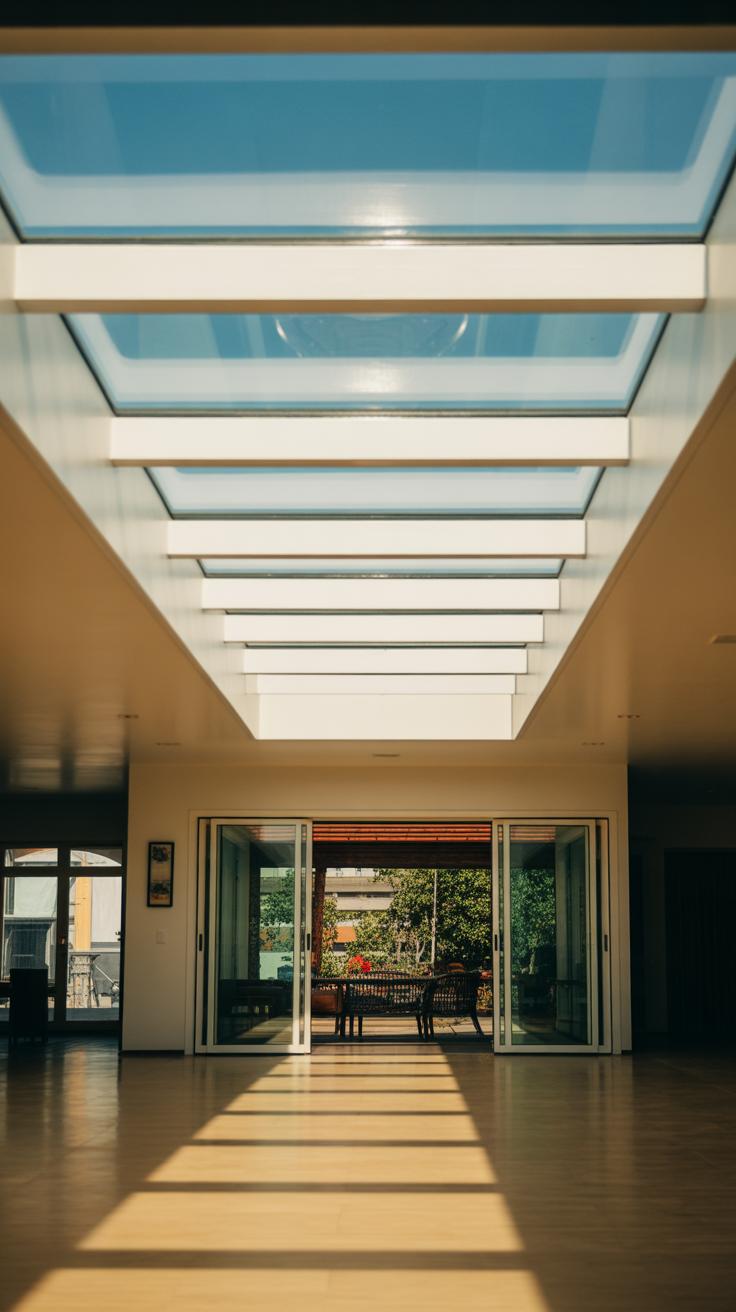
Natural light dramatically shapes the feel of your modern barn home. Using windows, skylights, and glass doors helps you fill your space with sunlight, reducing the need for artificial lights during the day. Think about how sunlight moves through your home at different times. Which rooms need the most light? Placing windows where they catch morning or afternoon sun boosts warmth and brightness.
Skylights deliver overhead light that reaches deep into rooms. They brighten dark corners and create an open feeling without sacrificing wall space. Glass doors connect indoors and outdoors, inviting nature inside and enhancing your views. Position them facing gardens or patios to bring a seamless flow between outside and inside living.
Consider your barn’s structure when planning openings. The high ceiling and open floor plan typical to barn homes give flexibility for various window and door sizes. Think about creating a mix of smaller windows for wall space and larger glass features to open rooms to light. How can your home’s layout use windows and doors to best capture and enjoy natural daylight?
Window Styles and Placement
Choosing window styles that match your barn’s character shapes light quality and aesthetics. Tall, narrow windows emphasize vertical lines common in barns and bring controlled light. Wide, horizontal windows work well along longer walls to spread light evenly. Sliding or casement windows add fresh air without interrupting sunlight.
Place windows near seating or kitchen areas where natural light makes the space livelier. At higher spots, windows illuminate without glare or privacy loss. Grouping windows on corner walls opens multiple views and draws in light from different angles.
Think beyond uniform window placement. Mixing sizes and shapes creates interest and highlights architectural features. Where could a pair of windows brighten a cozy reading nook? What about panels framing your barn doors? Wall height and sun angles should guide your layout so every window adds day-long light effectively.
Skylights and Glass Doors
Skylights bring unique benefits to modern barn homes. They illuminate rooms where side windows can’t fit, like middle halls or bathrooms. Installing them along the roof ridge maximizes sunshine throughout the day. Choose operable skylights for ventilation and comfort.
Glass doors offer large light-filled openings that blur indoor and outdoor boundaries. Sliding or folding glass doors on the back deck invite sunlight and fresh air while expanding living space. Placing doors facing south catches warm light in colder months, improving energy efficiency.
Consider combining skylights with glass doors near living and dining areas to create a bright, airy environment. Could a wall of glass doors open your gathering space to a garden view? Where will skylights create the best bursts of overhead daylight? Planning these elements carefully turns your barn into a naturally lit, welcoming home.
Exterior Design Ideas

Roof Styles and Colors
Modern barn homes often feature simple roof shapes like gable or gambrel styles. These roofs maintain the classic barn silhouette while providing practical benefits, such as efficient water drainage and extra attic space. Gable roofs have two sloping sides that meet at a ridge, offering a clean, triangular shape that fits well with minimalist designs.
Color choices for barn roofs tend to focus on contrast and durability. Common colors include traditional red, charcoal gray, deep green, or black metal roofing. These colors help the roof stand out or blend with natural surroundings. Metal roofing is popular because it resists weather and lasts longer than traditional shingles. Consider how your roof’s color will complement the siding of your barn home. Do you want it to pop or quietly merge with the landscape?
Landscaping Tips
Simple landscaping highlights a barn home’s strong, clean lines. Use native plants to reduce maintenance and improve environmental harmony. Grasses, evergreens, and wildflowers add texture without overwhelming the space. Placing a row of small trees or shrubs along walkways can guide visitors toward entrances and soften hard edges.
Create outdoor living spots with stone or wood patios for practical enjoyment. Think about how outdoor lighting can improve safety and highlight architectural features at night. Adding raised garden beds or a vegetable patch fits the rural theme while providing fresh produce. Are you ready to connect your barn home with its surroundings through thoughtful landscaping?
Interior Design Inspired by Barn Style
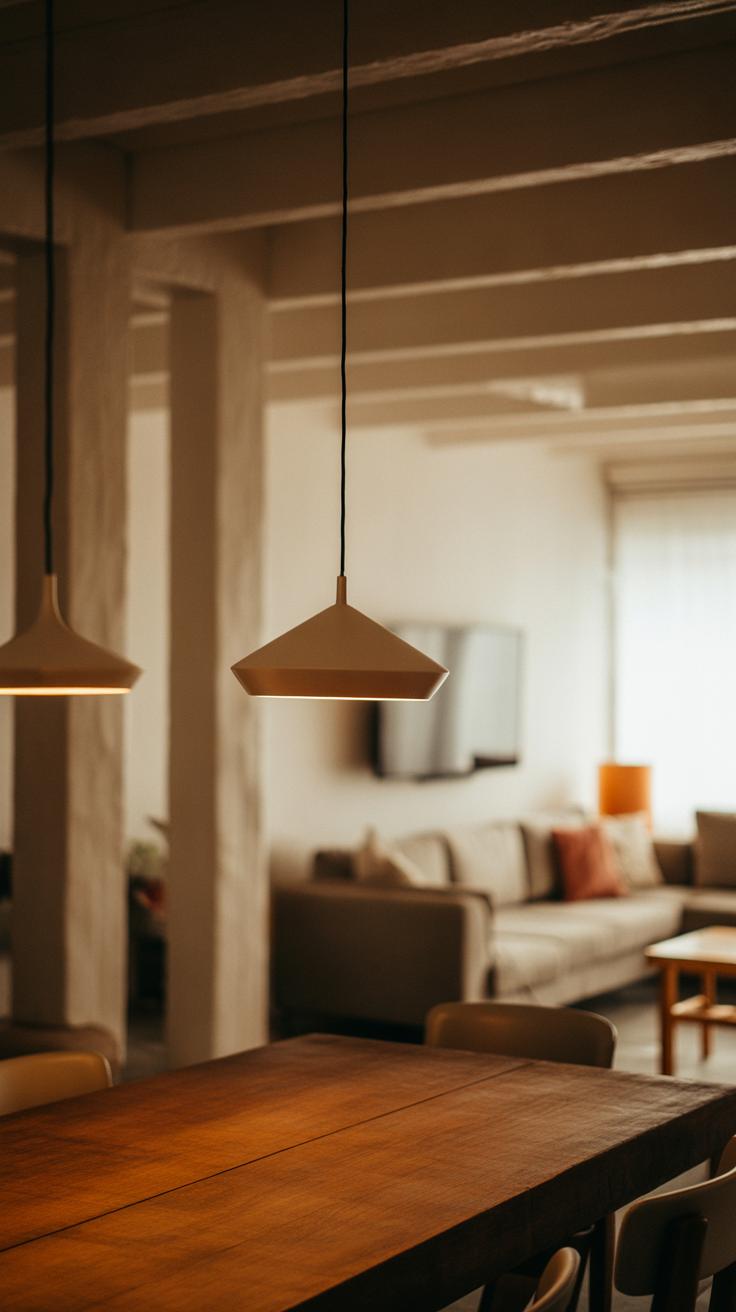
Your modern barn home can carry its strong exterior theme well inside through thoughtful choices in furnishings, colors, and textures. Using wood in different finishes mirrors the natural, rustic character of barns while allowing warmth to fill your living spaces. Consider exposed beams, reclaimed wood accents, or sturdy wooden furniture that highlights craftsmanship without feeling heavy.
Simple décor pieces with clean lines support the barn aesthetic while keeping the space feeling fresh and open. Incorporating metals like wrought iron or black steel offers contrast and ties back to barn hardware found on doors or windows. Layering materials such as linen, cotton, and leather introduces texture that invites touch and comfort, giving your home a lived-in quality.
Ask yourself what elements bring your barn style to life inside. Are your furnishings durable but inviting? Do your textures complement each other without overwhelming the senses? Focusing on these questions helps create a cohesive design that reflects the barn’s history, structure, and spirit.
Furnishing for Comfort and Style
Your furniture should echo barn style without sacrificing comfort or use. Opt for pieces with solid wood frames or metal details that resemble traditional barn elements. For example, a farmhouse table can act as a centerpiece in your dining room while providing sturdy, long-lasting use.
Seating can include plush, overstuffed couches with neutral covers that wash easily and resist wear. Think of leather armchairs paired with cozy wool throws, inviting you to relax after a long day. Storage solutions like wooden benches or open shelving keep the air uncluttered and serve practical needs.
How do you balance rustic charm and modern comfort in your furniture? Choosing items that serve multiple functions, like ottomans with storage, allows you to enjoy both style and everyday usefulness.
Color Palettes and Textures
Colors in a modern barn interior tend to favor earthy, muted tones. Soft creams, warm grays, deep greens, and faded blues work well to create a calm, grounded environment. These colors reflect the natural surroundings of traditional barns without making your home feel dark or heavy.
Textures enhance your color choices by adding depth and visual interest. Rough-hewn wood, woven textiles, and stone accents give a tactile layer that breaks up smooth surfaces. Consider a jute rug or burlap pillows to introduce subtle contrasts that comfort your senses.
What shades help your space feel inviting without losing the barn’s simplicity? Which textures give your rooms personality and warmth? Experimenting with repeats, like linen curtains and wooden floors, helps you find a balance between cozy and practical.
Energy Efficiency in Modern Barn Homes
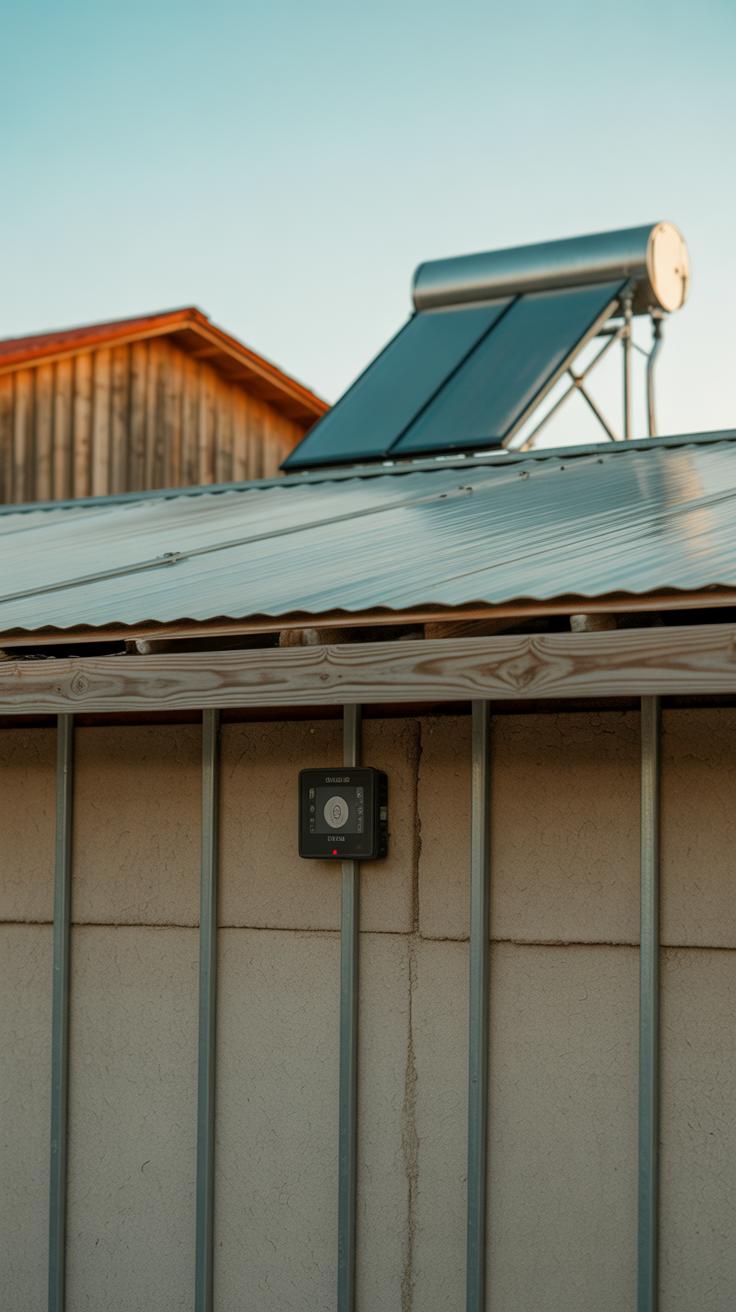
Insulation Techniques
You may think traditional barn walls let air slip through, but modern barn homes can hold heat well with the right insulation. Spray foam insulation works great because it fills cracks and seals tight spaces. Rigid foam board added to walls and roofs helps reduce heat loss and adds strength to the structure.
Think about using insulated panels made for barn-style buildings. They combine wood with foam layers, making installation faster and improving energy savings. Tackling air leaks around windows and doors with weather stripping also cuts down on drafts. How much energy could you save by stopping cold or hot air from sneaking in?
Efficient Heating and Cooling
Heating and cooling use most energy in any home. Modern barn homes benefit from heat pumps, which work efficiently in many climates. A ductless mini-split heat pump lets you control temperatures room by room without wasting energy heating empty spaces.
Radiant floor heating is another option that heats your home evenly and makes it feel cozy without cranking the thermostat. Ceiling fans help circulate air and reduce the need for air conditioning during summer months. Could pairing these systems with smart thermostats help you lower your utility bills without losing comfort?
Customization and Personalization

Your modern barn home should feel like it was made just for you. Personal touches help bring personality and warmth to the open, often rustic spaces that define this style. Think about the features that make daily life easier or more enjoyable. Custom architectural elements offer a great way to fit your lifestyle while enhancing the home’s design.
Custom Architectural Features
Adding built-in shelves tailored to your book collection or favorite decor can create cozy, organized spots throughout your home. Staircases offer another opportunity for customization. You might choose a minimalist metal frame for a sleek look or wood with open risers to highlight the barn’s height. Imagine incorporating hidden storage beneath stairs or a reading nook nearby. These features reflect your practical needs and style without interrupting the clean lines typical of barn homes.
Decor that Reflects Your Style
Decor lets you express who you are while staying true to the barn home’s character. Layer textiles like wool throws or linen pillows to soften hard surfaces. Choose lighting with industrial or vintage looks to complement exposed beams and metal accents. Art and personal mementos displayed on simple shelves can bring color and interest without cluttering. What items in your life tell your story? Use them thoughtfully to fill your space with meaning and comfort.
Building or Renovating Your Modern Barn Home
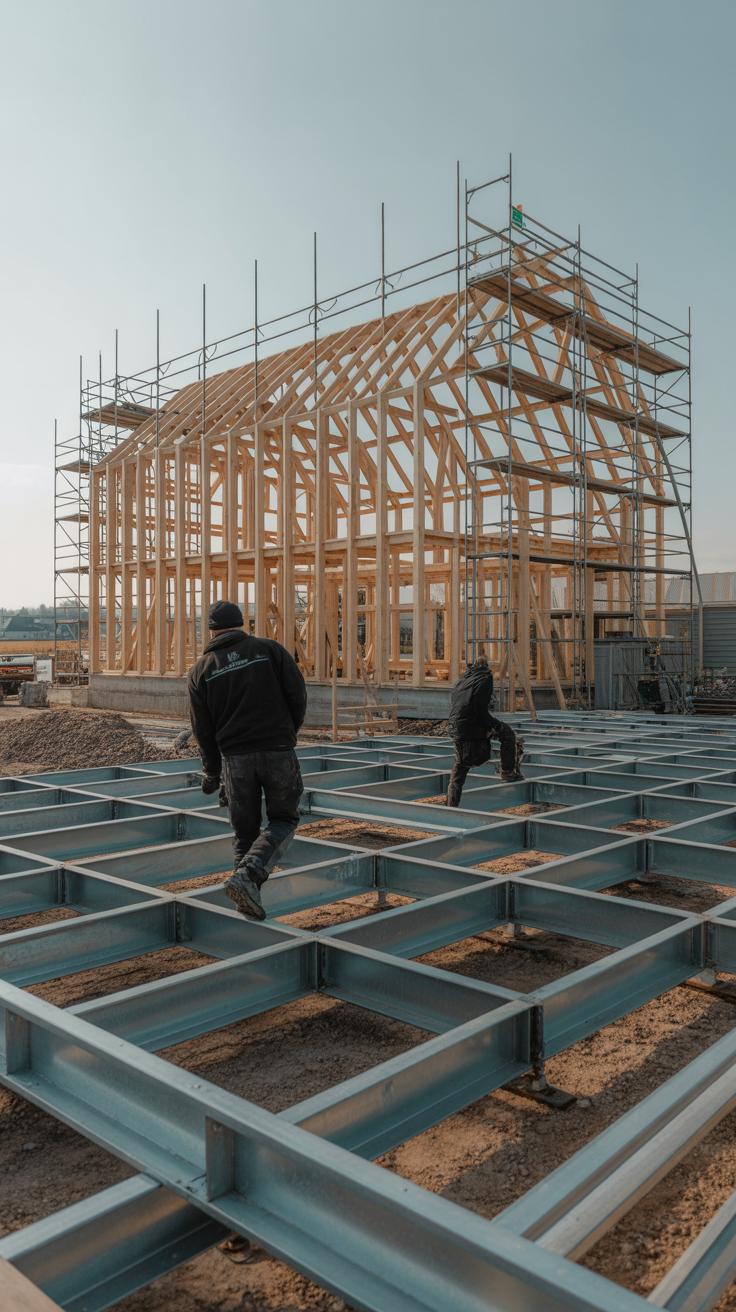
Planning and Budgeting
Start by writing down your goals for the project. What parts of the barn do you want to keep, and what needs to change? Decide the size, layout, and features you want in your modern barn home. Having clear answers helps avoid surprises later.
Set a budget based on research. Include costs for materials, labor, permits, and unexpected expenses. Break the budget into detailed categories so you can control spending. Ask yourself, how flexible is your budget if prices rise or if you want to add something extra?
Create a timeline with realistic milestones. Plan time for design, getting permits, construction, and inspections. Missing this step might cause delays and increase costs. Keep track of progress regularly to stay on schedule and within budget.
Choosing the Right Professionals
Look for architects and builders who specialize in barn-style homes. Their experience means they understand the unique challenges of working with barn structures and materials. Ask to see portfolios of their past barn projects to check their style and skills.
Interview several professionals before deciding. Ask how they handle problems like insulation, structural repairs, or integrating modern features without losing the barn’s character. Hiring someone unfamiliar with barn homes could lead to mistakes or design issues.
Check references and speak with previous clients. Did the professional finish on time? Did they stick to the budget? Clear communication and trust between you and the team impact the project’s success more than you might expect.
Conclusions
Modern barn style homes offer a smart choice for those who want a unique blend of traditional and modern design. You can enjoy the spacious and open feel that barn structures provide, along with the convenience of modern architecture. Using natural materials and thoughtful layouts can transform your living space into a comfortable and attractive home. This style allows creative freedom and suits various locations and lifestyles.
Choosing the contemporary modern barn style means focusing on simplicity and functionality. Paying attention to details like window placement and finishing materials can greatly improve your home’s look and feel. Whether you plan to build new or renovate, these design concepts provide solid guidance. By applying them, you can create a home that fits your tastes and enhances your daily living.


